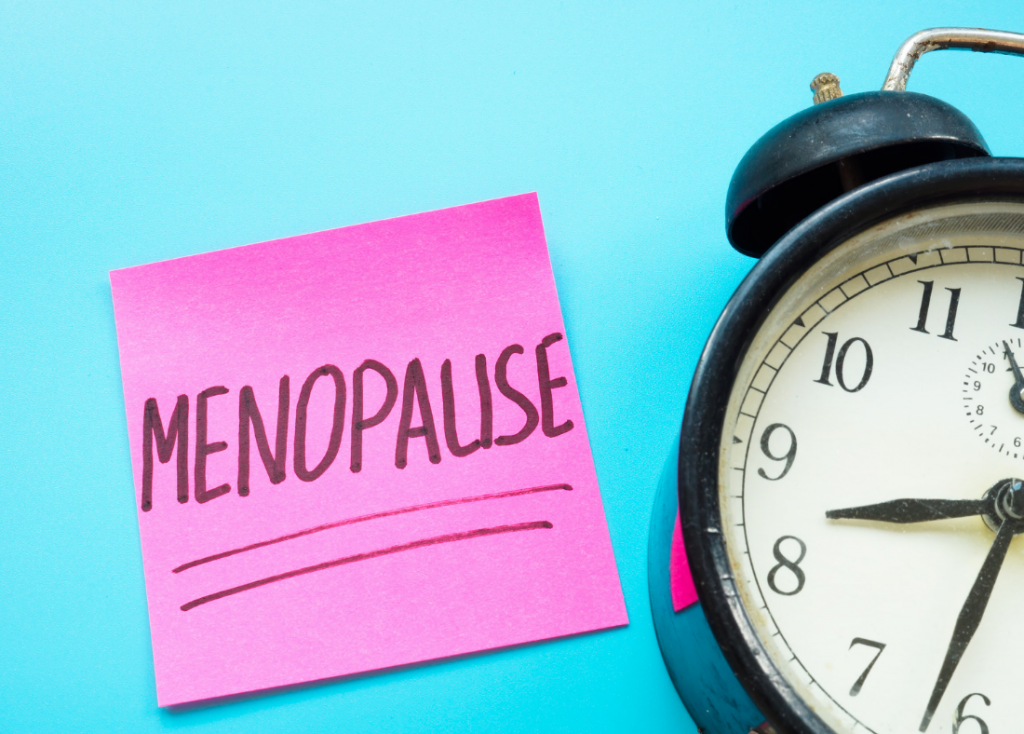Training for Menopause: What we really need to know and do!

All ladies dread the “changing of life” and the symptoms that it can bring. Unfortunately, it will happen to all ladies at some stage in their life, the average age being 51, but it can be anywhere from 45 – 55 years old.
What is menopause?
Menopause is technically diagnosed by the absence of any menstrual period. However, you can even be in perimenopause 7-10 years before this age too and start to experience symptoms as early as your 40’s or even your late 30s.
Did you know that estrogen effects every organ system in a woman’s body from the brain, skin and hair to the gut, joints, bones, muscles, and reproductive and cardiovascular systems. Our sleep can become more disrupted and inflammation can increase. Resulting in over 40 symptoms that a woman may experience from perimenopause to post-menopause, a woman can spend one third of their life trying to cope with menopausal symptoms. Some of the most common symptoms are Hot Flashes/Flushes, Insomnia, Weight Gain, Increased Visceral/Belly Fat – you can keep track of this by the waist-to-hip ratio, Hair loss/changes, Memory loss/brain fog, Mood shifts eg impatience, increased risk of depression.
As we age our hormone levels of estrogen, progesterone, and testosterone decrease, and we start to lose muscle mass (sarcopenia – age-related muscle loss) and gain fat, particularly around our belly, belly fat or visceral fat is fat stored around our internal organs. Too much belly fat can lead to insulin resistance, an increase in inflammation, and a heightened risk of metabolic syndromes e.g. diabetes, hypertension, and cardiovascular disease.
With decreased estrogen production, women have an increased risk of heart disease, osteopenia (bone mineral density is lower than normal – before osteoporosis), and osteoporosis (bones become weak and fragile).
What can we do about it?
Through this period of our lives, we need to focus on keeping our metabolism up. This is done through strength training and building lean muscle which will increase your metabolism and fat burning. The amount of muscle mass we have defines our basal metabolic rate – or the rate at which we burn calories at rest ( Basal Metabolic Rate, BMR)
It is very well known that women are more likely to develop osteoporosis than men. Estrogen is essential for healthy bones and unfortunately, after menopause the level of estrogen in the body falls and can lead to a rapid decrease in bone density.
Resistance training before menopause is crucial to assist with building and maintaining bone mineral density. Yes, you can still build muscle post menopause, it just takes more effort and time.
Things we can do to help our transition and beyond:
- Increase Protein intake – 1.2-1.5 grams per kg of body weight, Aim for 20-30 grams per meal.
- Fibre – try to get at least 25 grams a day (preferably from food). Fibre is a prebiotic and promotes a healthy gut biome. A high-fibre diet helps you maintain a healthy weight, lowers cholesterol, regulates blood sugar levels, and reduces your risk of heart disease and cancer. It can help you lose weight because it displaces other less satisfying calories. More fibre-rich foods mean lower insulin levels and slow
- Reduce added sugar – consume less than 25 grams of added sugar daily, this does not include the natural sugars found in fruit, vegetables, and dairy. Added sugar disrupts your gut microbiome which can lead to developing insulin resistance.
- Progressive Strength Training – at least 2 times per week, preferably 3 – 4 days, lift heavy / less reps.
- Increase your general daily movement – get your steps up!
- At least 150 mins of moderate intensity physical activity a week – zone 2 training, this is low impact and requires a consistent pace at 60 – 70 % of your maximum heart rate (MHR = 220 – your age). Prolonged high-intensity or endurance training can contribute to high-stress hormones.
- Prioritizing recovery – Exercise creates little tears in the muscle, which causes soreness. Rest provides the time for your muscles to repair and grow. You might need more recovery time as you age and progress through menopause.
- Reduce stress – chronic stress contributes to inflammation through elevated cortisol levels and may cause increased blood pressure, headaches, depression, and anxiety. Here are some ways to help actively lower your cortisol levels, journaling, breath work, yoga, meditation, sleep hygiene, and saunas.
What type of exercise is best?
All exercise is beneficial BUT
- Resistance training is essential. It improves insulin sensitivity by increasing muscle mass (so more cells take up glucose) and directly stimulates bone-building activity.
- Pilates and Yoga for meditation, breath, mobility, flexibility and load bearing.
- Aerobic training to help maintain a healthy cardiovascular system (150 mins per week)
- Self-maintenance like foam rolling, trigger ball, core/posture exercises.
Need some help in the gym? Come work with one of our personal trainers and get confident doing resistance training, at the right intensity. Email us: info@fhq.co.nz
“STRENGTH OVER SKINNY”
” Fitness HQ for Women is the North Shores boutique 24/7 womens gym. At Fitness HQ we pride ourselves on having an inclusive gym where women can feel comfortable and non-intimidated”
